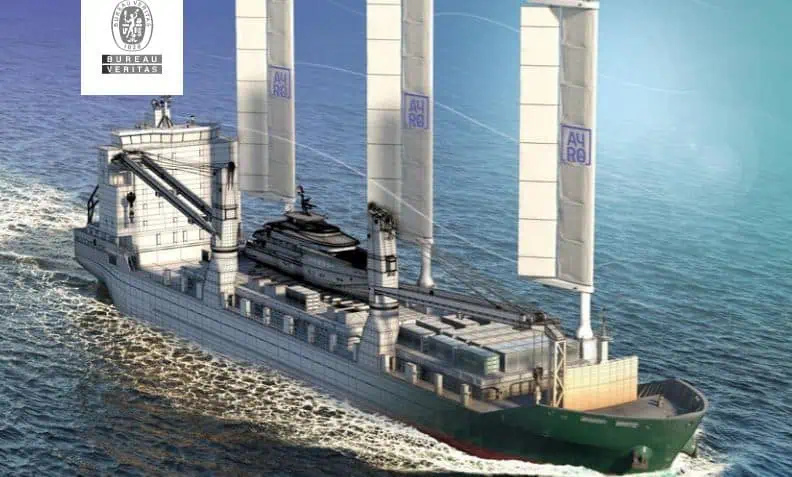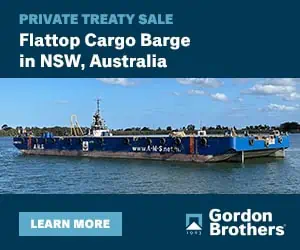Bureau Veritas (BV), a world leader in testing, inspection, and certification, has released new-generation classification rules for wind propulsion systems. These rules will help support and drive the development of zero carbon propulsion options for modern ships.
The new Bureau Veritas rule notation for WIND PROPULSION SYSTEMS (WPS) – NR 206, builds on pre-existing BV rules released in 1987. Now two new notations have been issued to provide the classification requirements for modern wind powered ships: WPS 1 for standing rigging and WPS 2 for standing and running rigging. Both provide load cases and coefficients for all types of wind propulsion technologies including free standing rigs, wing sails, kite sails and wind turbines.
The new rules provide the key classification framework for wind assisted propulsion. Firstly at the design review stage, safety and interactions with other systems on board must be addressed and, secondly, for in-service life, the rules address survey regime and maintenance requirements.

Credit: Chantiers de l’Atlantique
General requirements that must be addressed include:
- Risk analysis / hazard identification (HAZID) studies
- Definition of load cases and critical situations
- Definition of automation and release system
- Definition of wind propulsion system impacts on ship safety
- Ship strength; influence on hull girder strength, addressing bending moments and shear forces
- local strength in way of connections between wind propulsion systems and the ship including the mast footings, boom, deck, standing rigging attachments to the ship and maneuvering systems
“We are pleased to see Bureau Veritas’s continuous involvement and support in innovation and in the decarbonization of shipping with the release of these new rules. These technical guidelines will help us in the development of our Oceanwings and their application on board cargo vessels.”
LUDOVIC GÉRARD
CEO AYRO
In addition, the rules require an operational manual including limitations of operation of wind propulsion systems in accordance with its design, such as wind speed limitations.
Yves Pelpel, Senior Vice President Technical at Chantiers de l ‘Atlantique, said: “With the concept of solid sail, first of its kind of a new generation of very large sails made of rigid panels and its Aeoldrive balestron rigging, Chantiers de l ‘Atlantique is offering the most advanced and innovative solution of sailing propulsion of the large ships market. The integration on-board a passenger ship of such an innovative solution is only possible thanks to the tremendous collaborative work done with Bureau Veritas on its new rules Wind Assisted Propulsion.”
Laurent Leblanc, Senior Vice President Technical & Operations at Bureau Veritas, commented:
‘We know that the power of the wind, even if it is not always available, can make a significant contribution to GHG free ship propulsion and ship design. Wind propulsion systems can play a significant auxiliary role in providing substantial propulsive energy and, in some cases, wind could be used for main propulsion requirements. This is an incredibly exciting time for the industry as we revive an ancient, powerful and endlessly renewable source of energy – but with all the benefits of modern technology and materials. Bureau Veritas is currently involved in a wide range of wind propulsion projects and all stakeholders are increasing their understanding as we make progress.”
Bureau Veritas is addressing the challenges of sustainability and the energy transition by providing solutions to the safety, risk and performance requirements for innovation in future fuels and propulsion systems. Forthcoming rules from Bureau Veritas in 2021 will address methanol, ammonia and hydrogen as marine fuels, including fuel cell applications. Bureau Veritas recently issued ‘NH3 Ready’ approval to GTT related to containment of ammonia in LNG as fuel membrane tanks.













